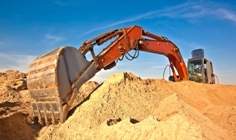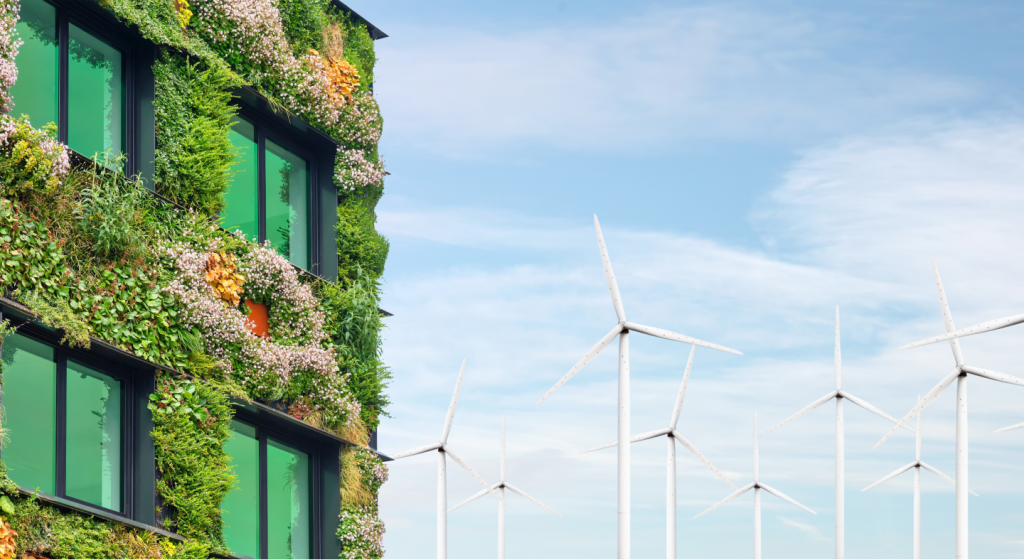
Jonnie Keys, general manager of Euro Auctions, outlines what equipment is in demand and where it is going
Global movements in new and used construction equipment are a strong indicator of how the various world economies are faring. In stable or expanding regions it is inevitable that major construction and infrastructure projects will be implemented along with expansion in the raw materials extraction and logistics sectors, but when times get tough historically there is a slowdown in these sectors.
The latest long-range global construction forecast predicts worldwide output will rocket by 85% through to 2030, growing $8trn (€7.5trn) to reach $15.5trn, driven in the main by growth in China, India and the US, which account for 57% of all global growth. This in turn is polarising demand for both new and used plant and machinery in these three markets, which are followed closely by Indonesia, the UK, Mexico, Canada and Nigeria.
The forecast also says that by 2025, driven in the main by mega infrastructure projects in the medium to long term, the UK will be the largest market in Europe, overtaking Germany, and becoming the world’s sixth-largest construction market.
China is currently the world’s largest construction market, but as activities in infrastructure and industrialisation weaken and the increasing slump in housing has a greater impact, this market will cool; however, by 2030 it should still account for around $4.1trn of the total. China’s transition to a consumer- and services-driven economy also provides opportunity for growth in new types of construction, including healthcare, education and social infrastructure, as well as retail and other consumer end markets.
India is expected to be the fastest-growing construction market in the world, and by 2030 will account for 18% of all global growth with a market reaching $1.5trn, growing almost twice as fast as China. It also has the largest housing needs globally, with an anticipated 170m new homes needed by 2030. Delhi, for example, is forecast to grow by 10.4m people from its current 25.7m – vying with Tokyo-Yokohama, currently at 38m but forecast to shrink, and Jakarta at 31.3m – to become the world’s largest city.
The US construction market, which is tilted towards the northern states, is expected to grow faster than China over the next 15 years and remains the fastest-growing developed country globally, with an average 5% yearly growth.
However, weak oil prices, less-favourable exchange rates and the current presidential elections are all having a short-term impact, but much locally manufactured equipment continues to be sold in the home market, and in Canada and Mexico. Extraordinary growth is also anticipated in Indonesia, overtaking Japan in the region by 2030.
How well do you really know your competitors?
Access the most comprehensive Company Profiles on the market, powered by GlobalData. Save hours of research. Gain competitive edge.

Thank you!
Your download email will arrive shortly
Not ready to buy yet? Download a free sample
We are confident about the unique quality of our Company Profiles. However, we want you to make the most beneficial decision for your business, so we offer a free sample that you can download by submitting the below form
By GlobalDataIn Latin America, Mexico is poised to overtake Brazil, as the stranglehold of excessive bureaucracy and the Petrobras scandal continues to hold back the economy and investment and as stagnation in demand for construction sets in, particularly now that the impetus of the 2016 Olympic Games has concluded.
With projects like the $653m Tilal City plan in UAE, and the $1bn ‘The Tower’ project in Dubai, development goes on in affluent parts of the Middle East unabated, although political and economic unrest in Syria, Iraq, Egypt, Yemen and Libya and the activities of al-Qaeda and Islamic State in and around the Arabian Peninsula will continue to impact the region in the long term.
That said, a major cleanup and rebuilding programme will eventually be required, which should help fuel demand for all manner of competitively priced general-purpose machinery.
Russia had also been heralded as a growth region to watch, but recently it has gone a little off the boil, although it still has major commitments to events like the 2018 Fifa World Cup. This means improvements in infrastructure are still being made, with news cities stadia and airports being constructed, all requiring earthmoving and road building machinery.
The global construction industry is diverging as markets are buffeted by opposing forces – overstretch in booming economies on one hand and downturn in markets that rely on commodity exports or trade with China on the other.
Two macroeconomic factors – the sharp fall in oil prices and China’s slowdown – have rippled across the global industry triggering a rapid polarisation of the market, but construction will continue to be one of the most dynamic global industrial sectors over the next 15 years, supporting industry sectors like mining, provision of building materials, machinery manufacturers and even the distribution of a skilled workforce; these will all be vital in the evolution of prosperous societies around the world.
So where is all the equipment going?
Against this backdrop, the equipment market has remained uncertain and quite volatile since the global financial crisis of 2008.
However, by 2019 annual sales of new equipment are expected to reach around 810,000 units sold and exceed $218bn, as more operators look to replace aging equipment and purchase new machinery amid improving economies – still short of the 2011 heyday when over a million new sales were reported, but rebounding from the 731,500 pieces sold in 2015.
This expansion in production is expected to bring a swathe of additional used stocks onto the market, providing some real opportunities for smaller construction equipment users to acquire advanced equipment, including aftermarket parts and attachments.
Another key factor in the sector is that instances of fraud, scamming and cloning are becoming increasingly common, particularly with the use of letters of credit often used to acquire equipment. This means the industry will have to be more vigilant and accept that the buying and selling process takes a little longer.
US equipment manufacturers continue to have a torrid time on the global market having kicked off 2016 by reporting a 13th consecutive quarter of contraction in equipment sales.
Earthmoving equipment like loaders and excavators, which can be used in a variety of applications including general construction, utility provision and surface mining, saw the largest decrease in exports, despite global demand for popular models advancing at a consistent pace.
The European construction equipment market remains positive at the moment, recording an unexpectedly dynamic start in 2016, reaching its highest levels in more than two years. This was driven in part by the robust recovery of the French market, the continuation of the recovery in Southern Europe and the stability of the Western European market as a whole. However, July saw a drop after five strong months but growth in Europe is still there, although the momentum has perceptibly dwindled.
Chinese manufactured equipment sales are also being impacted by a local slowdown in demand, which is resulting in some deals being negotiated on exports, but volumes are expected to hold up for the next few years, aparticularly as market demand in the Asia-Pacific, Central and South America, and the Africa-Middle East regions are all expected to sustain above-average equipment sales.
Excavator and wheeled loaders from all manufacturers remain particularly sought after, and this is reflected in strong demand for new models, and high auction prices being achieved for quality used models.
Heightened operator requirements, particularly where health and safety, vehicle security and engine emission management are concerned, have been driving change in developed countries, helping stimulate new equipment sales, and increasing the pace at which technology has to be updated.
Greater personal protection enforcement – even in many emerging markets that have and continue to suffer with poor enforcement – is still resulting in some of the oldest and more dangerous equipment being consigned to scrap yards, driving demand for replacement, better-designed and -maintained equipment at the bottom end of the global market.
Looking at the European market moving forward, Brexit has made little difference except for the fall in the value of sterling, which has simply increased interest in UK-based machines, and this should help maintain equipment prices from all other non-sterling countries.
Over the last 18 months we have also seen strong demand in Poland and Ireland, which seem to be getting busier with most good-quality, low-hours machines selling well, and equipment like telehandlers and other utility-type machines along with mid and mini excavators, continuing to be much sought after.
And so to the immediate future
So looking ahead to the next 12-18 months, wheel loaders, generators, back hoes and dumpers are all in constant demand, and are being hotly contested in many international markets.
Most significantly, China – with its comprehensive range of machinery from conventional dozers, wheeled loaders and back hoes, through to aerial work platforms and crawler cranes – is also looking beyond its traditional markets. Marques like ZoomLion, LuiGong, XCMG and Shantui are poised to become more familiar, particularly in the third-world markets but also in the mature US and European markets. While these will be tougher to crack, Chinese manufacturers are already making inroads and establishing overseas R&D, logistics and service footholds.
We also expect a successful Chinese takeover of a major marque, particularly given that ZoomLion recently attempted to acquire the US-based crane maker Terex, and while a figure of $3.4bn was tabled, the deal foundered as a mutually agreeable figure could not be reached.
The global quarry sector has seen a significant focus on new equipment launches over the past year, with significant additions including new crushing and screening equipment from manufacturers including Sandvik, Terex and Kleemann.
Elsewhere, the newly launched Volvo A60H articulated 55-tonne hauler is also set to do battle with the equally impressive Bell B60D, both of which are creating real interest at the heavy end of the haulage sector. Equally, their mid-range dump truck models, with their lower costs and haulage per tonne costs, are impressing a host of mid-capacity users, along with offerings from Caterpillar and others.
Demand for excavators and wheeled loaders in this sector from all key vendors is also buoyant, and as the new models come on stream, buyers are lining up to purchase quality used equipment as it becomes available.
Australia has seen a scaling back of its mining sector over recent years, however there has been a resurgence in demand for coal, and the iron ore market is at an all-time high with exports up. This has resulted in new mines opening and existing ones – in a move to increase efficiency – being regenerated with updated equipment.
This is also creating a strong case for equipment that left Australia when mining initially slowed down, returning to satisfy demand. Heavy loaders and dump trucks in particularly are highly sought after.
A boom in construction, particularly the housing sector, fuelled in part by significant capital investment from China, plus some good-sized civil engineering projects coming on-stream, is driving demand for good-quality, mid-range utility equipment like back hoes, diggers and dozers, along with other smaller items of general site machinery.
With no indigenous manufacturing, Australia is totally reliant on machinery imports, but retains its preference for high-end international brands such as Caterpillar and Komatsu, and used equipment prices remain strong.
General construction equipment continues to go down a storm in markets including India, Indonesia, Nigeria and Vietnam, which all retain an appetite for simple, no-frills, easy-to-maintain equipment, including back hoes, telehandlers, compressors and mixers, making it a prime purchaser of older used plant equipment, although demand for reliable mid-range models is increasing.
Similarly South Korea, with its general expansion programme including major road and infrastructure projects for the 2018 Winter Olympics, continues to demand all manner of dozers and excavators along with all-purpose construction machinery, mixing plant and tower cranes.
Japan’s focus on the 2020 Olympic Games will equally start to command equipment for its ambitious plans, although there is speculation that several stadia projects may be scaled back or even dropped completely, with existing facilities being used as projected build costs soar fourfold or more.
The most recent Euro Auctions sale in Leeds in late August was also Europe’s largest ever for used heavy plant, construction and agricultural machinery, with 4,645 lots sold across three days generating a total hammer price of over £31.5m.
Similarly we have seen a real upsurge at other auctions in the number of contractors consigning equipment to auction to make way for the new machines being ordered to update their fleets, and this demand is reflected within the used equipment sector with a significant increase in first-time bidders – many of whom secured lots.
The overriding market impression is that while times remain tough, the trend is towards recovery and the outlook is generally optimistic and buoyant.
Demand for quality second-hand equipment remains high, with certain models including quality telehandlers, mid- and mini-excavators and other utility machines, including versatile agricultural equipment, trading at a premium.
Buyers, while they have funds available, are always going to be seeking a bargain, be more discerning and increasingly prioritise machinery that incorporates safety features and environmentally compliant engines.
From a seller’s perspective it is therefore even more important to present used plant and machinery in the best possible condition, and be prepared to see it shipped to the parts of the globe that most need it.







